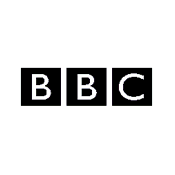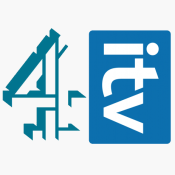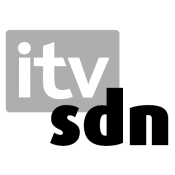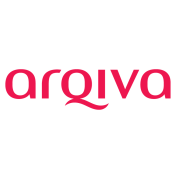Why do the six Freeview "multiplexes" have twenty different names?
 Brian Butterworth published on UK Free TV
Brian Butterworth published on UK Free TV All digital television services - from cable and satellite to terrestrial transmission - were planned and implemented to use the existing "analogue" broadcasting infrastructure.
The engineers who designed the services created digital broadcasting systems that would allow the reliable distribution of bits using the same infrastructure of cables and masts (or satellites) that already carried the analogue services to millions of homes.
Part of the design process allowed for more than one television channel to be carried by the digital system using a long-established data-processing technique called "multiplexing", a word that had, by another route, also come to mean a cinema complex where several films are shown at once on different screens.
It was back in 1996 that Parliament decided that the UK should have a six-multiplex service.
The Broadcasting Act 1996 provided that these "multiplex licences" should be issued for 12 years with a one-time right-to-renew.
Independent Television Commission: 1, 2, A, B, C and D
The regulator at the time, the ITC (Independent Television Commission) said:Of these six multiplexes, two are wholly reserved for existing broadcasters who are guaranteed places on the multiplexes under the Broadcasting Act 1996. The first will be used by the BBC to transmit existing programmes in digital form and develop new digital services. The second is reserved for Channel 3, Channel 4 and Teletext Ltd whose existing services will be reproduced in digital form, and who can use the additional capacity available for new services. This multiplex will be licensed and regulated by the ITC.
Licences to operate the remaining four were advertised and three have now been awarded to British Digital Broadcasting plc (BDB). The fourth multiplex, the third largest in terms of UK coverage, has been awarded to S4C Digital Networks Ltd (SDN). It will carry the new Channel 5, S4C in Wales, and a certain amount of Gaelic programming during peak hours in Scotland.
The ITC named the "wholly reserved" multiplexes 1 and 2, and the others, by the level of coverage: A, B, C and D.

British Digital Broadcasting plc eventually launched their service as ONdigital on 15th November 1998, re-launched as ITV Digital on 11th July 2001 and went out of business on 1st May 2002.
ITV Digital handed back B, C and D multiplex licences to the regulator, who awarded them to the promise of a free-to-air service the BBC and Crown Castle International, a company formed by the privatization of the BBC's transmitter network.
Freeview
 When Freeview started on 30th October 2002, the BBC realised that the existing broadcasting "mode" used for the digital services was causing problems for some viewers. For this reason, some multiplexes changed from "mode 1" to "mode 2" (see the diagram at the end of the article), which provided a more stable signal, but with the loss of some channel capacity. See Freeview modes - a simplified explanation for a longer discussion about this.
When Freeview started on 30th October 2002, the BBC realised that the existing broadcasting "mode" used for the digital services was causing problems for some viewers. For this reason, some multiplexes changed from "mode 1" to "mode 2" (see the diagram at the end of the article), which provided a more stable signal, but with the loss of some channel capacity. See Freeview modes - a simplified explanation for a longer discussion about this.
This was not a problem for the BBC with six full-time television channels to fit onto two whole multiplexes. So, multiplexes 1, B, C and D changed to the robust mode, but 2 and A did not.
Ofcom plans PSBs and COMs
 During the planning for the digital switchover, where the existing analogue channels are turned off over several years, Ofcom, now the regulator used the names PSB1, PSB2, COM4, PSB3, COM5 and COM6 to refer to the six multiplexes.
During the planning for the digital switchover, where the existing analogue channels are turned off over several years, Ofcom, now the regulator used the names PSB1, PSB2, COM4, PSB3, COM5 and COM6 to refer to the six multiplexes.
PSB refers to the "public service broadcasters" (BBC, Channel 3 licence holders - ITV plc, STV and UTV, Channel 4 Corporation, S4C - Sianel Pedwar Cymru, Channel 5 and the "public teletext service".
The PSB multiplexes have almost total coverage of UK homes - 98.5%, and are broadcast from all television masts in the UK, including 1,036 smaller ones that only carry the PSB services.
COM is an abbreviation of "commercial", referring to the two multiplexes held by Arqiva, the company that owns and operates all of the UK television transmitters, and SDN, a company owned by ITV plc.
The COM multiplexes have coverage of around 90%, and are broadcast from the main 81 transmitters.
Because this planning required that all multiplexes move to "mode 3" the post-switchover multiplexes these new descriptions have been widely used to represent the "final" multiplexes, even though legally they are named 1, 2, A, B, C and D - see Ofcom - Multiplex licensees.
The introduction of Freeview HD has seen the BBC change the use of the BBC multiplex to "DVB-T2" mode, and in addition, during 2012 the commercial multiplexes have changed to "mode 8 configuration", which has increased their capacity by another 12.5% - see Changes to commercial multiplex capacity - 2012 timetable .
Eight more names
Digital UK now refers to the multiplex by the name of the ower, usually four letters, but sometimes the written in full, so we now have:Multiplex 1 is also known as PSB1 and also BBCA
 BBCA denotes the first BBC multiplex when in "mode 3", with all the services from "mode 2" multiplexes 1 and B. This multiplex has many regional versions to supply BBC regional news on BBC One.
BBCA denotes the first BBC multiplex when in "mode 3", with all the services from "mode 2" multiplexes 1 and B. This multiplex has many regional versions to supply BBC regional news on BBC One.
Multiplex 2 is also known as PSB2 and also D3+4
 The legal owner is "Digital 3 and 4 Ltd", which is half-owned by the Channel 3 licensee, and half-owned by the Channel 4 Corporation. This multiplex has more than 20 regional versions to supply regional news on ITV 1/STV/UTV, plus advert regions for that station, Channel 4, Channel 5 and the channels 3 and 4 "plus one" services.
The legal owner is "Digital 3 and 4 Ltd", which is half-owned by the Channel 3 licensee, and half-owned by the Channel 4 Corporation. This multiplex has more than 20 regional versions to supply regional news on ITV 1/STV/UTV, plus advert regions for that station, Channel 4, Channel 5 and the channels 3 and 4 "plus one" services.
Multiplex A is also known as COM4 and also SDN
 SDN, originally "S4C Digital Networks" was sold to ITV plc in April 2005 for £134m. The SDN multiplex has two versions, one for Wales, where it carries E4 and one for the rest of the UK.
SDN, originally "S4C Digital Networks" was sold to ITV plc in April 2005 for £134m. The SDN multiplex has two versions, one for Wales, where it carries E4 and one for the rest of the UK.
Multiplex B is also known as PSB3 and also BBCB
Multiplex C is also known as COM5 and also ArqA (or ArqivaA)
 The "mode 3" (now "mode 8") post-switchover ArqA/COM5 multiplex carries all the services on "mode 1" Multiplex C, with space for couple of extra TV channels.
The "mode 3" (now "mode 8") post-switchover ArqA/COM5 multiplex carries all the services on "mode 1" Multiplex C, with space for couple of extra TV channels.
Multiplex D is also known as COM6 and also ArqB (or ArqivaB)
 The "mode 3" (now "mode 8") post-switchover ArqA/COM5 multiplex carries all the services on "mode 1" Multiplex D, with space for couple of extra TV channels, which include 4seven and two subscription channels, Sky Sports 1 and 2.
The "mode 3" (now "mode 8") post-switchover ArqA/COM5 multiplex carries all the services on "mode 1" Multiplex D, with space for couple of extra TV channels, which include 4seven and two subscription channels, Sky Sports 1 and 2.
Freeview standard transmission "modes"

The above diagram illustrates the capacity of different ONdigital/ITV digital/Freeview transmissions over the years. The longer the bar, the more bits are transmitted per second. Mode 2 is 16QAM, mode 7 is QSPK, the DVB-T2 modes are 256QAM, the rest 64QAM.
4:47 PM
Bernard Aldymon:
If you've entered your postcode into the settings here (icon top RHS) it has an error as it currently shows some obscure location in Cheshire! You may wish to update it.
| link to this comment |
4:58 PM
Bernard Aldymon:
Just to add, depending on where you are within Hemel Hempstead, those two channels - multiplexes ArqA/COM5 & ArqB/COM6 may be the weakest of the signals or more vulnerable to interference from elsewhere.
| link to this comment |
5:04 PM
Chris.SE: Bernard didn't enter a postcode -- the site analysed his posting and erroneously interpreted the 'CH48. An' part as a postcode.
| link to this comment |
5:24 PM
Steve Donaldson:
Well that's certainly looks to be the case, first time I've seen that error :o
| link to this comment |
8:21 PM
I have lost the ITV SD channels from my LG Smart TV that is tuned into the Waltham transmitter. The ITV channels that are broadcast in HD are still available in HD.
Neither an auto retune or a manual retune on C34 makes any difference. Any ideas please?
| link to this comment |
11:45 PM
Brian Thompson: There is engineering work listed this week for the Waltham transmitter. As you have retuned you may find that some of your channels have been deleted, requiring you to retune again once the signal has returned to get them back.
| link to this comment |